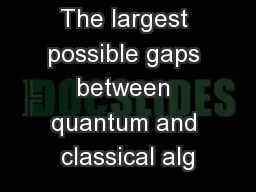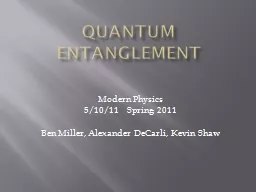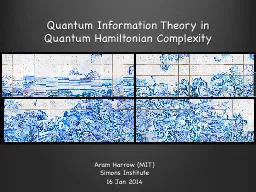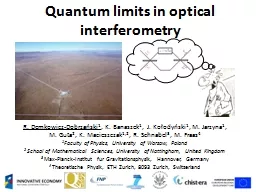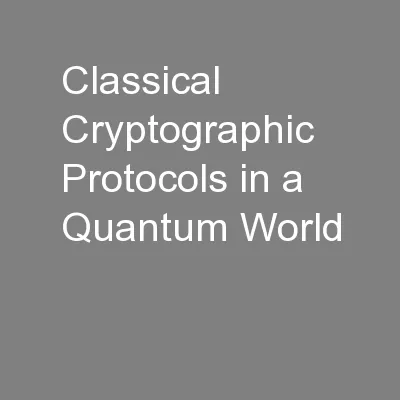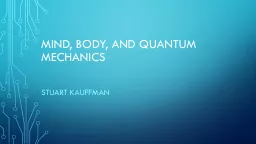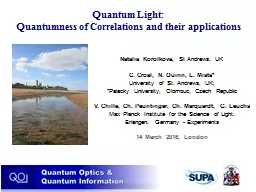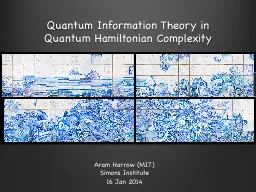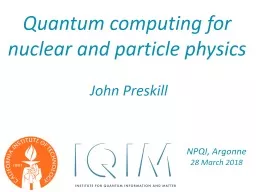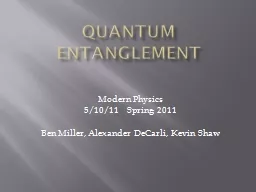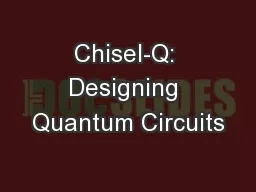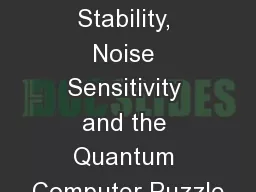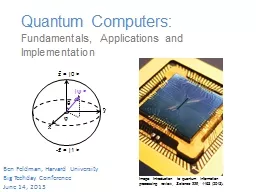PPT-The largest possible gaps between quantum and classical alg
Author : min-jolicoeur | Published Date : 2017-12-03
A ndris Ambainis Uni v ersity of Latvia Joint w o r k with Scott Aaronson Kaspars Balodi s Aleksandrs Belovs T r o y Le e Miklos Santha and J
Presentation Embed Code
Download Presentation
Download Presentation The PPT/PDF document "The largest possible gaps between quantu..." is the property of its rightful owner. Permission is granted to download and print the materials on this website for personal, non-commercial use only, and to display it on your personal computer provided you do not modify the materials and that you retain all copyright notices contained in the materials. By downloading content from our website, you accept the terms of this agreement.
The largest possible gaps between quantum and classical alg: Transcript
Download Rules Of Document
"The largest possible gaps between quantum and classical alg"The content belongs to its owner. You may download and print it for personal use, without modification, and keep all copyright notices. By downloading, you agree to these terms.
Related Documents

